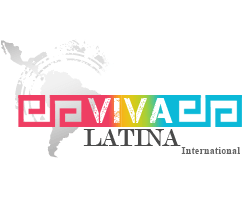Fabergé egg : the price of excess
Fabergé, a mythical name.
Fabergé eggs : a world reference throughout history for fine jewelry.
Fabergé was an exceptional jeweler working for the greatest crowned heads and the most fortunate, yet his destiny brought him to ruin because of the Bolshevik revolution.
No piece of jewelry in the world has been surrounded by so much pomp, misfortune, chance and mystery following their sale, their loss and rediscovery.
Fabergé eggs are certainly the most intriguing jewelry pieces of all because of their fascinating history, from their creation to their record-breaking auctions.
Following the Russian revolution of 1917, the Fabergé house disappeared, after 75 years of existence.
But, in 2015 :
the House of Fabergé freshly reconstituted (in 2007) challenges itself to create a new egg. The birch egg and the blue egg of Constellation Tsarevich were the last creations made.
It is almost a century later that the pearl egg Fabergé completes the collection of these masterpieces of artistic works.
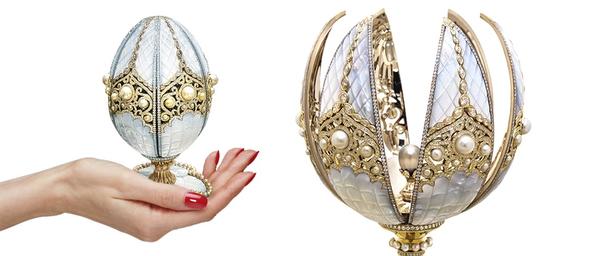
This egg of the Fabergé House is made up of 139 fine pearls (see article Pearls) and 3,300 diamonds. 20 craftsmen realized in 18 months the egg estimated at 2 million euros.
Historical auctions
Made more than a century ago, the price of Fabergé eggs was kept secret by both the jeweler and the sponsors.
To know the value of Fabergé eggs created between 1880 and 1917, we can refer to the four record sales in the history of jewelry.
- April 20, 2002 : Winter egg - Faberge - 1913.
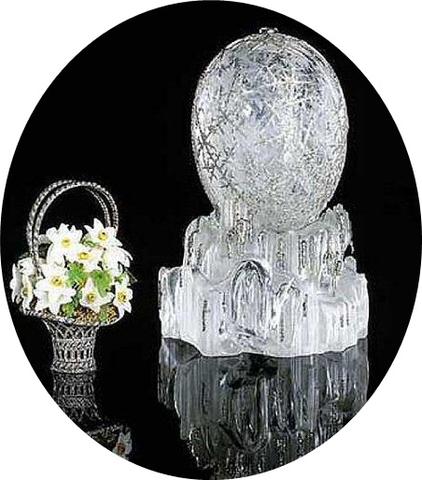
This egg was sold at 10.7 million euros during an auction conducted by Christie's in New York.
- February 4, 2004 : The Russian billionaire Victor Vekselberg bought the 180-piece collection of nine eggs from the Forbes family. This collection was estimated at around 120 million euros.
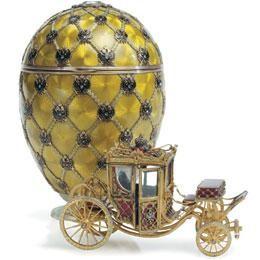
Egg carriage coronation 1897 : it was estimated at about 22 million euros by Sotheby's.
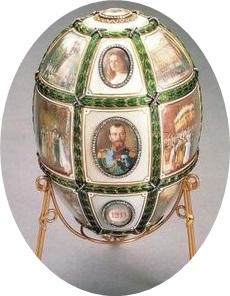
The 1st Anniversary egg -1911: Estimated at around 12.5 million euros by Sotheby's.

The orange egg 1911: Estimated at 12.5 million euros by Sotheby's.
- November 28, 2007 : egg Rothschild Fabergé - 1902
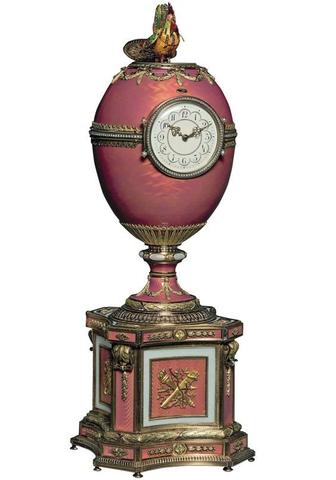
Auctioned by Christie's London, the egg was bought by collector Alexander Ivanov for the tidy sum of 12.5 million euros.
- Spring 2014 : Enameled blue enamel egg -1887
Found on a flea market in the United States, the egg contains a Vacheron-Constantin clock. It was bought by an anonymous collector at around 24 million euros.
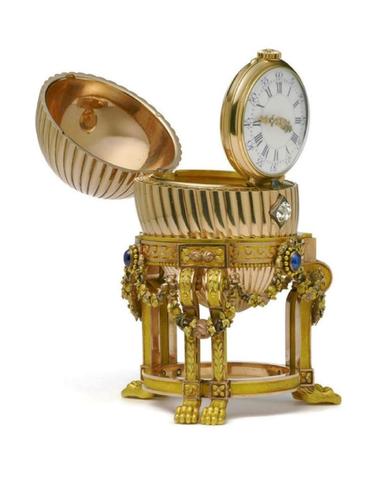
As we can see, Fabergé's historic eggs are pieces of art and collectibles whose prices rival those of other classic pieces of art known worldwide.
Today's prices
If you want to buy a Fabergé egg or Fabergé style, there are different offers on the market for every budget.
Recently Fabergé House has designed a collection of four eggs representing the four seasons of the year. The entire collection would have a value of 3.15 million euros or about 784 440 euros each.

From right to left, Emerald Spring, Sapphire Summer, Autumn Ruby and Winter Diamonds. (Maison Fabergé)
If your budget is more conventional, you have different options to satisfy your passion for these parts:
Imperial Paris is a commercial site offering copies of Fabergé eggs from 55 euros up to 825 euros. The materials used are alloys of non-precious metals, rhinestones and enamel.
"Les Merveilles de Russie" is an online store specializing in Russian products. She sells online copies of Fabergé egg handmade by Russian manufacturers.
Their copy is authorized by the Fabergé family. Prices for Fabergé style eggs vary between 39 and 380 euros. The materials used are rhinestones, non-precious pearls and non-precious metal alloys.
Regularly on Ebay you have the opportunity to buy Fabergé style eggs at prices ranging from 5 to 70 euros. The auctioned eggs are provided by the company Les merveilles de Russie.
If you want a Fabergé style egg from your imagination in gold or silver, with precious or fine stones, ask your jeweler-jeweler for a quote.
Where are the Fabergé eggs exposed ?
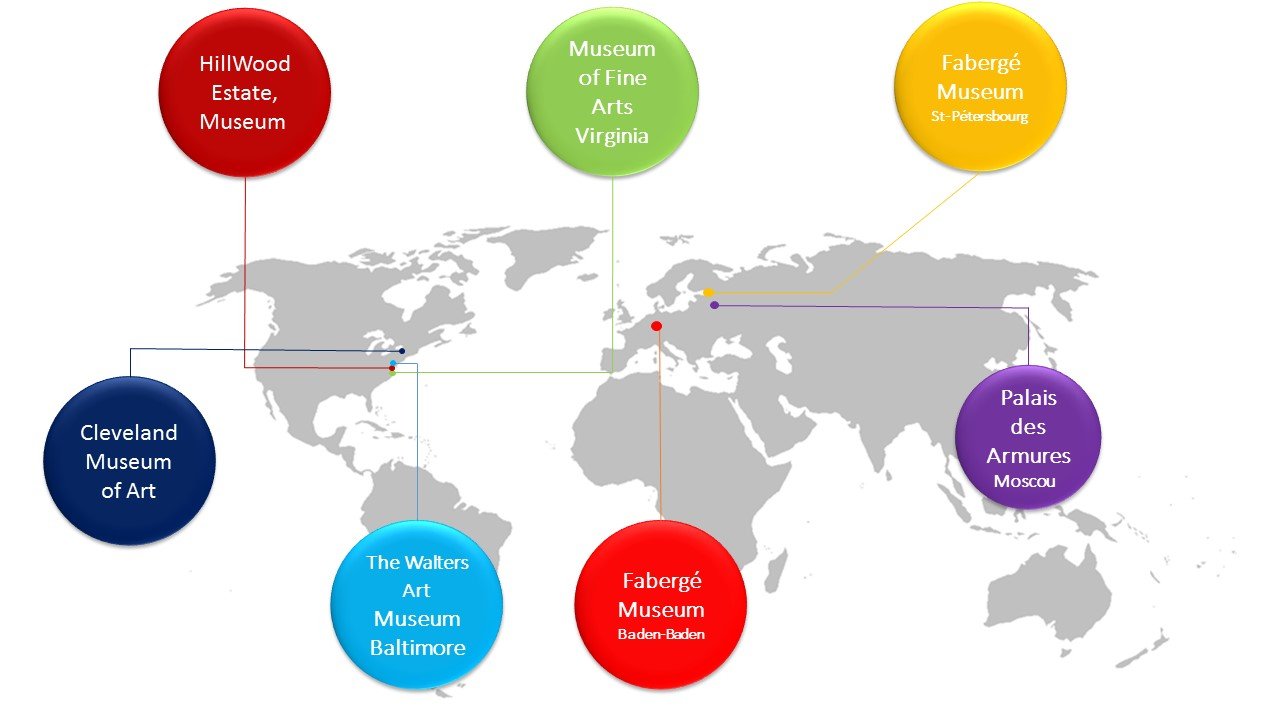
Fabergé Museum of Baden-Baden
Fabergé Museum of St Petersburg
Virginia Museum of Fine Arts
Walters Art Museum
HillWood Museum
Where are the eggs hidden ?
After the Russian revolution of 1917, the Bolsheviks sold the eggs to supply their cash.
Many have been sold throughout Europe at prices well below their real value. By crossing the different sources of information, we have developed this map to geolocate eggs in 2016.
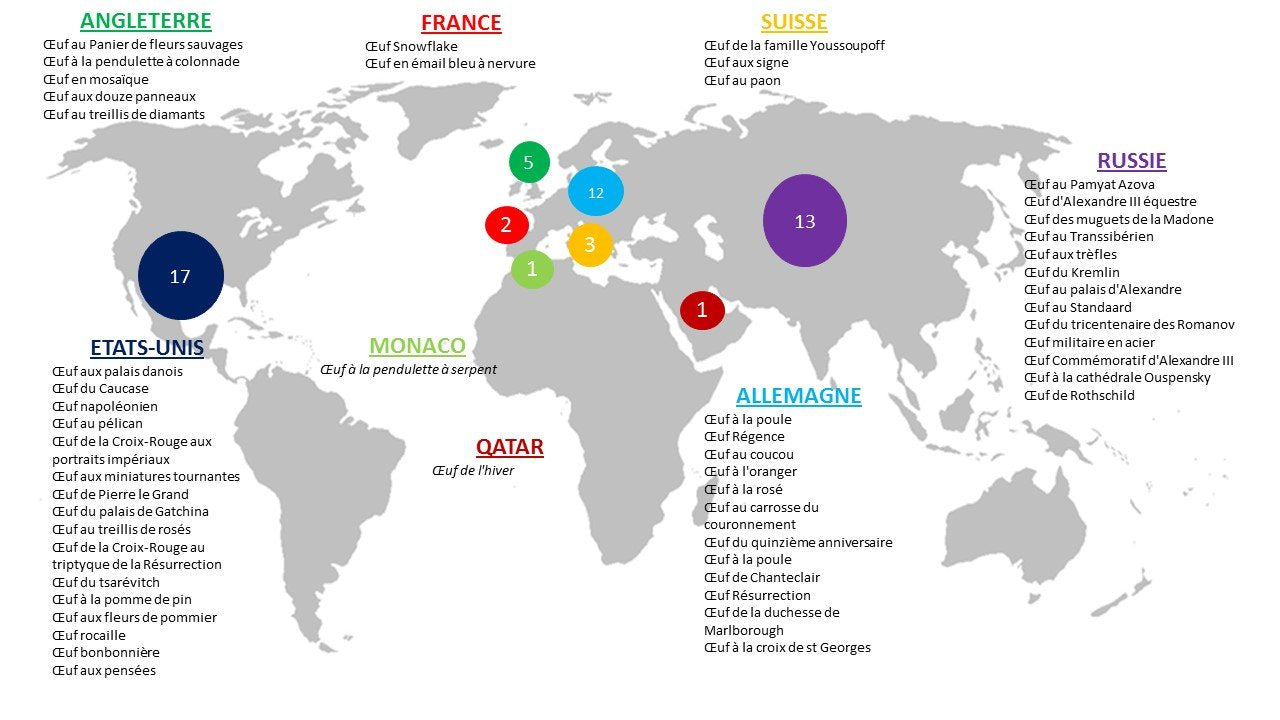
Map (fr) showing the location of Fabergé eggs
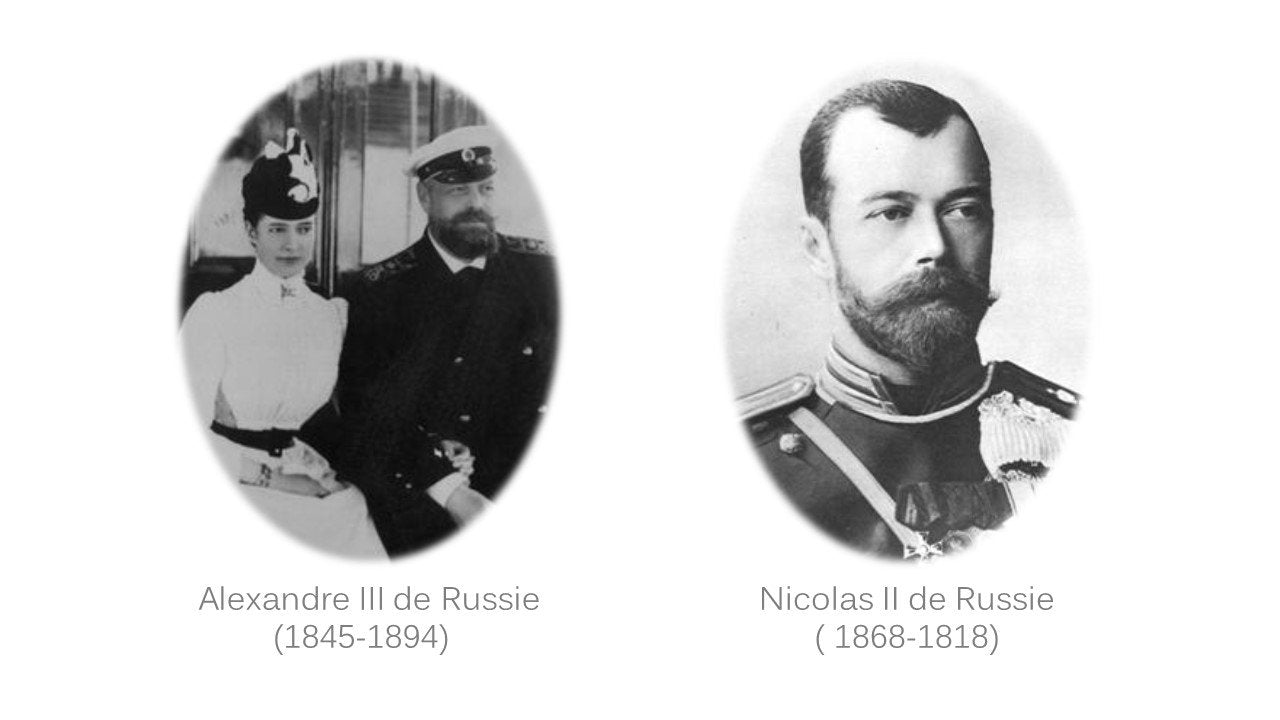
These unique masterpieces were commissioned by the wealthiest families of the 19th century. Alexander III of Russia, initiator of this tradition, made 10 of them and his son Nicholas II 42. As for the other eggs ;
- 7 were ordered by the Kelch family,
- 1 for the Yusupov family,
- 1 for the Rothschild family
- 1 for the Duchess of Marlborough.
Other eggs have been made for large wealthy families but their identity remains anonymous.
The artists of Fabergé House
Because of their mechanical complexity, their high precision manufacturing techniques and the high quality of the raw materials, Fabergé eggs are today the symbol of excellence in fine jewelry. Always imitated never equaled, few houses are able to reproduce these works of art.
Goldsmiths
To understand the excitement of this subject, we must go back to the historical context of their creation.
The Fabergé house was created in 1842 by Mr. Gustave Fabergé a Russian jeweler of French origin. His sons Pierre-Karl Fabergé and Agathon Fabergé stand out by Alexandre III during an exhibition in Moscow in 1882. (Biography of Pierre-Karl Fabergé). They imagine and design a collection of eggs all competing with ingenuity and know-how. This great success can be explained in particular by Karl Fabergé's ability to train and manage a talented jeweler team.
Although he set the standards for the Fabergé house, he relied on his workshop managers to complete the imperial egg production to perfection. They were the best goldsmiths and jewelers in Europe.
We suggest you to view this slideshare to discover these talented artists :
The Artisans of the Fabergé House (fr)
Watchmakers
The Fabergé house also used Swiss haute horlogerie factories such as Vacheron Constantin (now belonging to the Richemont group) to make eggs containing clocks.
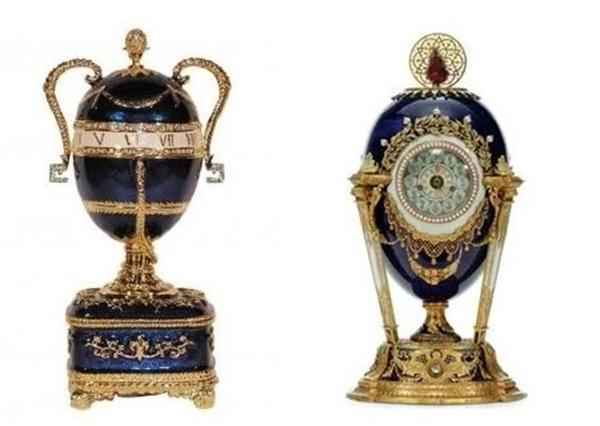
The egg with the snake clock (1887) and the egg of Chantecler (1904) are surely the most remarkable works as well for their mechanical complexity as aesthetic.
The egg with the snake clock encircles the egg and indicates the time.
Chantecler's egg contains an articulated rooster as a surprise, every hour he begins to sing.
What about today ?
Following the Russian Revolution of 1917, Fabergé House had to cease operations for many years. Refugee in Switzerland, the company came back to life in 2010, opening its first store in Geneva.
Although the name Fabergé was bought in 2007, the great grandchildren of Karl Fabergé contribute to give back the titles of nobility of the house Fabergé.
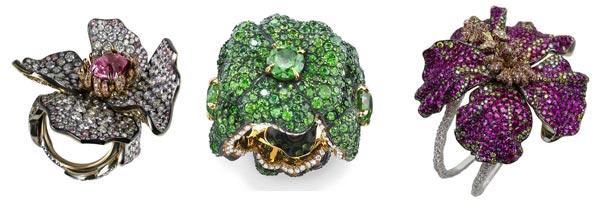
New jewelry collection from Fabergé house
With the help of a South African investor, Fabergé has released the first high-end jewelry collection.
Each jewel in this 100-piece collection ranges from $ 58,000 to $ 8 million.
The French Frédéric Zaavy is since 2009 the appointed designer of the house. His works oscillate between ancestral heritage and modernity.
Fabergé eggs creation
Nothing was beautiful enough to decorate a Fabergé egg : precious stones, precious stones, pearls, precious metals, etc.
It is difficult to provide all the listed in terms of their diversity and quantity, but one thing is certain: all the materials used were carefully selected for their characteristics of rarity, as for their aesthetics.
To give you an idea :
- The egg of the Standart (1909) : egg containing the imperial yacht of Nicolas II in miniature :
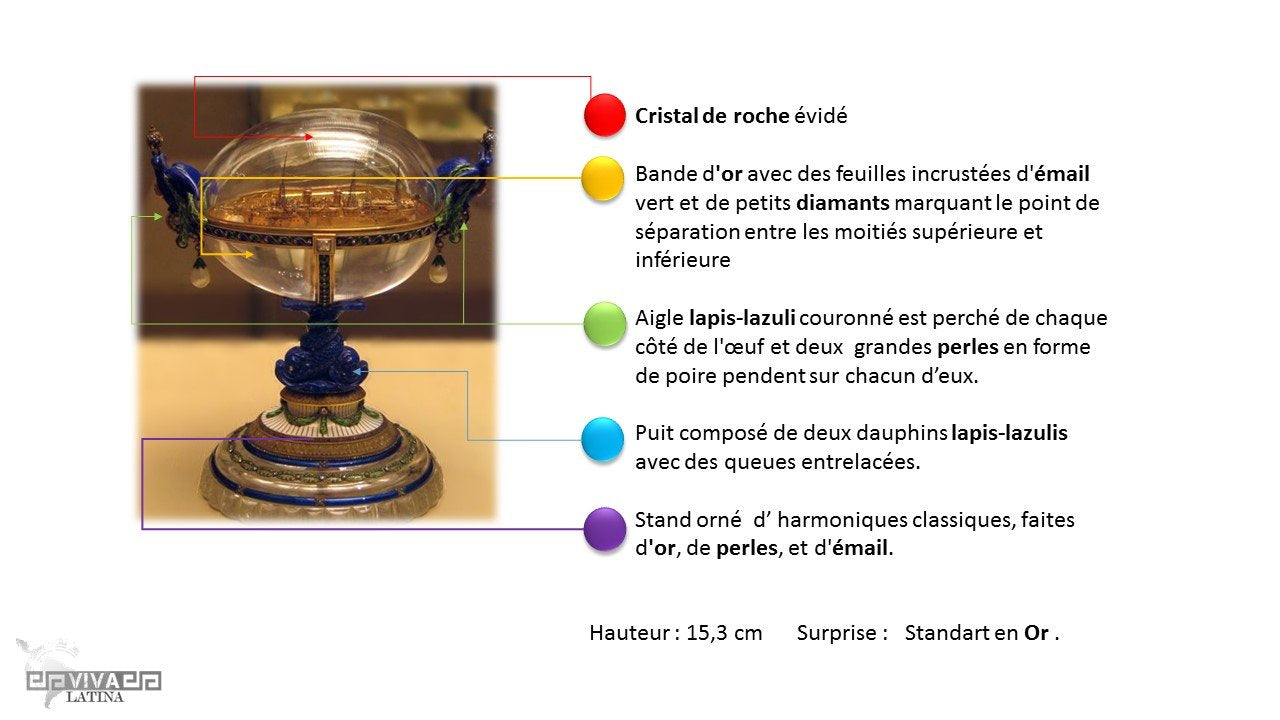
- Egg of Tsarevich 1912 : It is a Lapis-Lazuli egg containing the portrait of Alexis Romanov as a surprise.
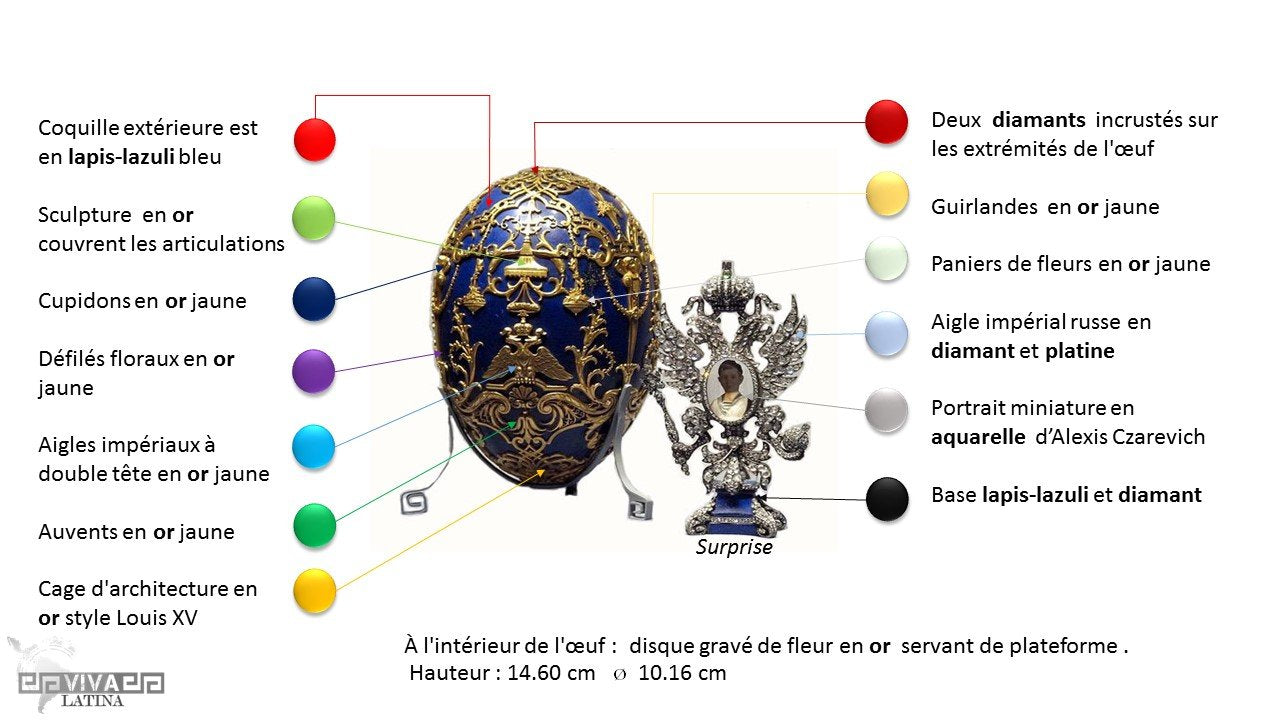
How were Fabergé eggs made ?
The trades around jewelry BijouterieVivalatina (fr)
Origin and symbol of the egg : the key to their success.
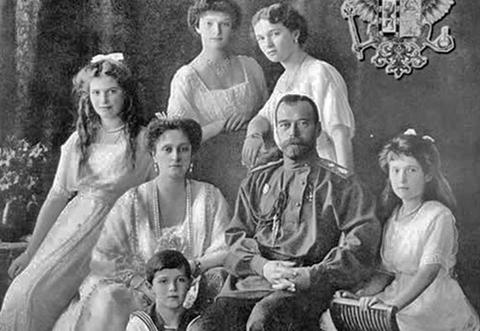
The Romanov family: Nicholas II and his wife Alexandra Fyodorovna surrounded by their 5 children
The origin of the tradition of the Easter egg.
In the nineteenth century, the commemoration of the resurrection of Christ was considered the most important event in the liturgical year of Christians.
Much more important than Christmas, Easter came after 40 days of fasting (a period of spiritual preparation for Easter).
In eastern European countries, Orthodox Christians were forbidden to consume chicken eggs during Lent.
Eggs that were not consumed during this period were kept and recycled as decorative items (hollowed and then painted) to be offered. It is from this tradition that the eggs of Fabergé were born.
Egg symbolism
The artistic and financial values of Fabergé eggs are not the only reasons for their timeless success.
These are the stories of life that murmur these masterpieces that make them unique.
Indeed, we know the tragic extermination of the Romanov family in 1917, but also the unconditional love Nicholas II had to his wife Alexandra Fyodorovna, or the obligation for Alexander Kelch (one of the richest men in Russia). to sell matches to survive, then his extermination in a gulag in 1930.
It's good because these eggs speak to everyone that they will remain living legends.
For further :
